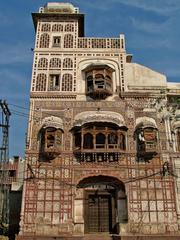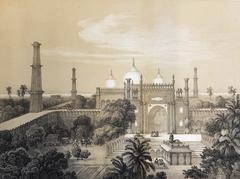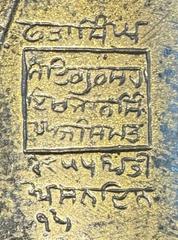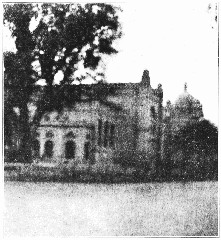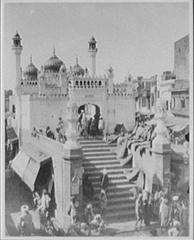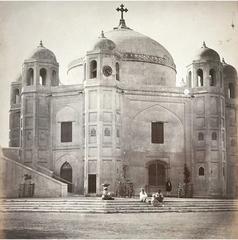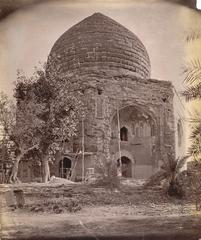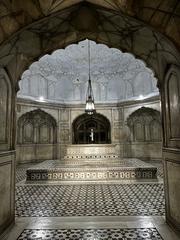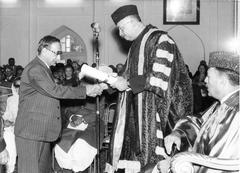
Taxali Gate Lahore: Complete Guide to Visiting Hours, Tickets, History, and Local Experiences
Date: 03/07/2025
Introduction
Taxali Gate, a storied landmark in the heart of Lahore’s Walled City, epitomizes the city’s rich historical layers, cultural diversity, and vibrant street life. Built during Mughal Emperor Akbar’s reign in the late 16th century, Taxali Gate originally served as a crucial entry point to the city, situated adjacent to the royal mint or “Taxal”—from which it derives its name. Although the original structure has largely disappeared due to centuries of urban transformation, the area today remains a living tapestry of Lahore’s Mughal, Sikh, and British legacies. This in-depth guide offers visitors a blend of historical insight, practical visiting information, and recommendations for exploring the area’s top attractions, culinary highlights, and cultural experiences (Walled City of Lahore Authority; Dawn; Graana.com).
Table of Contents
- Origins and Construction
- Historical Significance and Transformations
- Cultural Landscape and Architectural Heritage
- Visiting Hours and Ticket Information
- Top Attractions and Suggested Itinerary
- Culinary Highlights and Food Street
- Practical Travel Tips
- Frequently Asked Questions (FAQ)
- Conclusion
- Visuals and Interactive Elements
- References
Origins and Construction
Taxali Gate is one of the original thirteen gates that punctuated the fortified walls of Lahore. Constructed between 1575 and 1585 during the reign of Mughal Emperor Akbar, it was part of a grand urban fortification project designed to protect the city and regulate commerce (Dawn). Its proximity to the royal mint (“Taxal”) made it a vital economic center, attracting traders, artisans, and money-changers (Wikipedia; Zameen.com). Though the original gate has not survived intact, the area’s urban layout, street names, and local markets still echo its historical importance (Graana.com).
Historical Significance and Transformations
Mughal Era
During the Mughal period, Taxali Gate was more than a defensive structure—it was a hub of economic, artistic, and ceremonial activity. Its location near the mint fostered a bustling bazaar frequented by merchants trading in precious metals, textiles, and spices (Pakistan Today). Royal processions and public gatherings often passed through the gate, cementing its status in the city’s ceremonial life.
Sikh and British Rule
Under Maharaja Ranjit Singh, Lahore became the Sikh Empire’s capital, and restoration projects included Taxali Gate (The Friday Times). The British colonial period saw the demolition of much of the city wall, with only some gates—including Taxali—surviving, though often in modified forms (Heritage Foundation Pakistan). Administrative and policing reforms brought further changes to the social structure around the gate.
Cultural Landscape and Architectural Heritage
Architecture and Preservation
Taxali Gate’s vicinity showcases an array of historic architecture, from Mughal-era havelis to colonial buildings. Notable examples include the Haveli Dhiyan Singh and the Haveli of Khushal Singh, adorned with intricate woodwork and frescoes (Graana.com). The area reflects Lahore’s pluralistic heritage, with religious sites such as mosques, gurdwaras, and churches in close proximity (Graana.com). Preservation initiatives led by the Walled City of Lahore Authority (WCLA) focus on documentation and community engagement, though challenges like urban encroachment and pollution persist (WCLA Projects).
Arts, Music, and Literature
Taxali Gate has been a nucleus for music, poetry, and the performing arts. The neighborhood’s instrument bazaar is renowned for tabla, dhol, harmonium, and sitar makers, a nod to the area’s historic role as a center for classical music and dance (Youlin Magazine). Esteemed cultural figures, including Ustad Daman and Mian Yousaf Salah ud Din, have lived here, and their residences remain sites of literary and artistic gatherings.
Visiting Hours and Ticket Information
- Taxali Gate Area: Open daily, typically from early morning (7:00–8:00 AM) to late evening (10:00–11:00 PM), with peak vibrancy in the evenings.
- Tickets: No entry fee is required to explore Taxali Gate or its bazaars. However, nearby heritage sites—such as Lahore Fort and Badshahi Mosque—have separate ticketing (e.g., Lahore Fort: 9:00 AM–5:00 PM, PKR 500 for foreigners, PKR 50 for locals).
- Accessibility: The labyrinthine, historic alleys are narrow and uneven, posing challenges for those with mobility impairments. Comfortable footwear is advised, and guided tours can assist with navigation.
Top Attractions and Suggested Itinerary
Nearby and Notable Sites
- Shahi Mohalla (Heera Mandi): Once a celebrated center for classical music and dance and now a mix of artisans, eateries, and cultural intrigue (Al Jazeera).
- Sheikhupurian Bazaar: Lahore’s largest shoe market, famed for handmade khussas and Peshawari chappals (Trek Zone).
- Fort Road Food Street: Rooftop dining with panoramic views of Badshahi Mosque and Lahore Fort, bustling with culinary energy (Nishat Hotels Blog).
- Lahore Fort (Shahi Qila): A UNESCO World Heritage Site with highlights like Sheesh Mahal and Alamgiri Gate (Walled City of Lahore Authority).
- Badshahi Mosque: Iconic 17th-century mosque with stunning Mughal architecture (UNESCO World Heritage).
- Hazuri Bagh and Baradari: 19th-century garden and marble pavilion offering scenic relaxation (Punjab Tourism).
Suggested Half-Day Itinerary
- Morning: Stroll through Taxali Gate’s alleys and Sheikhupurian Bazaar.
- Lunch: Enjoy street food or rooftop dining on Fort Road Food Street.
- Afternoon: Visit Lahore Fort and Badshahi Mosque.
- Evening: Explore Shahi Mohalla and savor traditional sweets.
Culinary Highlights and Food Street
Signature Dishes
- Phajja Siri Paye: Iconic slow-cooked beef trotters, especially at Fazal Din’s eatery (Trek Zone).
- Halwa Puri: A breakfast favorite at Taj Mahal Sweets (Youlin Magazine).
- Traditional Sweets: Jalebi, gulab jamun, and more at Shahabuddin Halwai.
- Lassi and Chai: Ubiquitous, creamy yogurt drinks and robust teas.
Food Street Experience
Fort Road Food Street is a culinary epicenter, especially lively at night. Rooftop restaurants in restored havelis, such as Cooco’s Den and Haveli Barood Khana, offer immersive views of the illuminated Badshahi Mosque and bustling cityscape (Youlin Magazine).
Practical Travel Tips
- Best Time to Visit: October–March for cooler weather.
- Dress Code: Modest clothing is recommended, especially at religious sites.
- Guided Tours: Enhance your experience with heritage walks by WCLA (WCLA Tours).
- Navigation: Streets can be confusing; guides help uncover hidden gems.
- Safety: Generally safe during the day; avoid isolated alleys after dark.
- Photography: Respect privacy; always ask before photographing people.
- Tipping: Customary in restaurants and for guides (10–15%).
Frequently Asked Questions (FAQ)
Q: What are the visiting hours for Taxali Gate?
A: The area is accessible from early morning (7:00–8:00 AM) to late evening (10:00–11:00 PM).
Q: Is there an entry fee?
A: No fee for Taxali Gate itself; certain nearby attractions charge separately.
Q: Are guided tours available?
A: Yes, several organizations, including the WCLA, offer guided walks.
Q: Is it accessible for people with disabilities?
A: Accessibility is limited due to narrow, historic lanes; guides can assist.
Q: What are the must-try foods?
A: Phajja Paye, halwa puri, jalebi, and lassi are local favorites.
Conclusion
Taxali Gate represents the living heritage of Lahore—a layered intersection of history, culture, artistry, and gastronomy. From Mughal fortifications and vibrant markets to rooftop dining with views of iconic monuments, the area offers a window into Lahore’s dynamic past and present. Plan your visit during cooler months, consider guided heritage walks, and immerse yourself in the sensory richness of this unforgettable neighborhood. For the latest updates, download the Audiala app and follow official resources for guided tours and cultural events (Youlin Magazine; Walled City of Lahore Authority; Dawn).
Visuals and Interactive Elements
Internal Links
References
- Walled City of Lahore Authority
- Dawn
- Graana.com
- Pakistan Today
- The Friday Times
- Heritage Foundation Pakistan
- Express Tribune
- Al Jazeera
- The Nation
- Youlin Magazine
- Wikipedia
- Zameen.com
- The Express Tribune
- Nishat Hotels Blog
- Trek Zone
- UNESCO World Heritage
- Punjab Tourism

